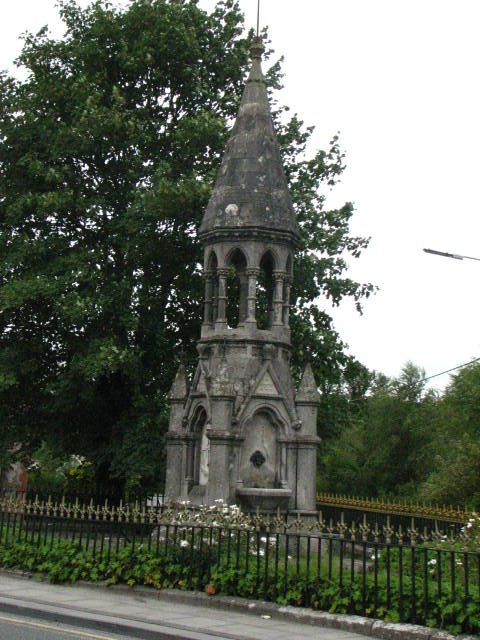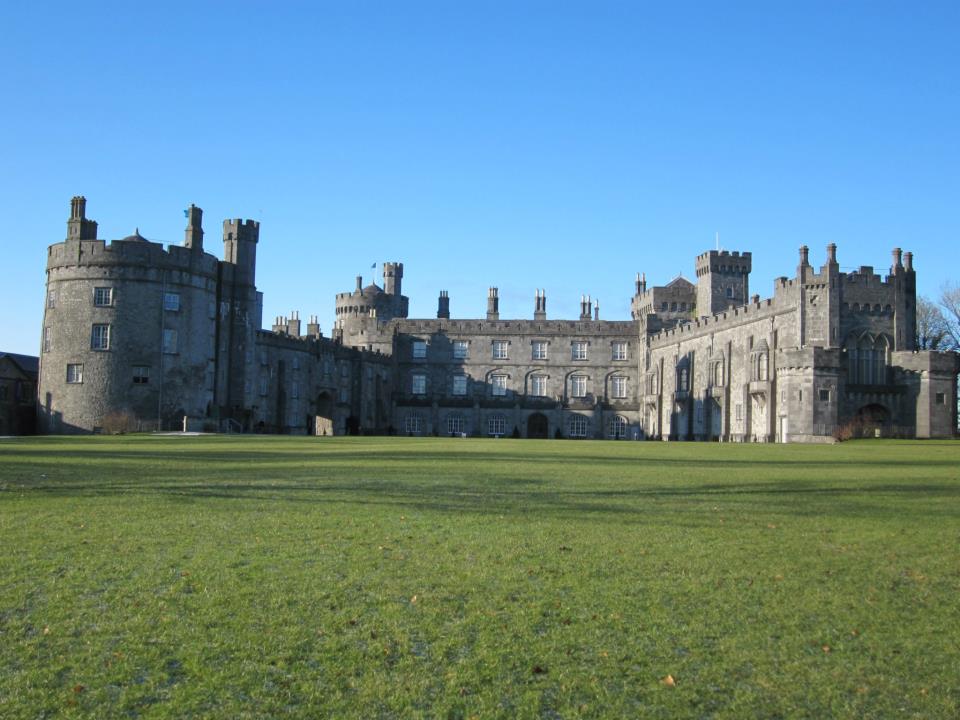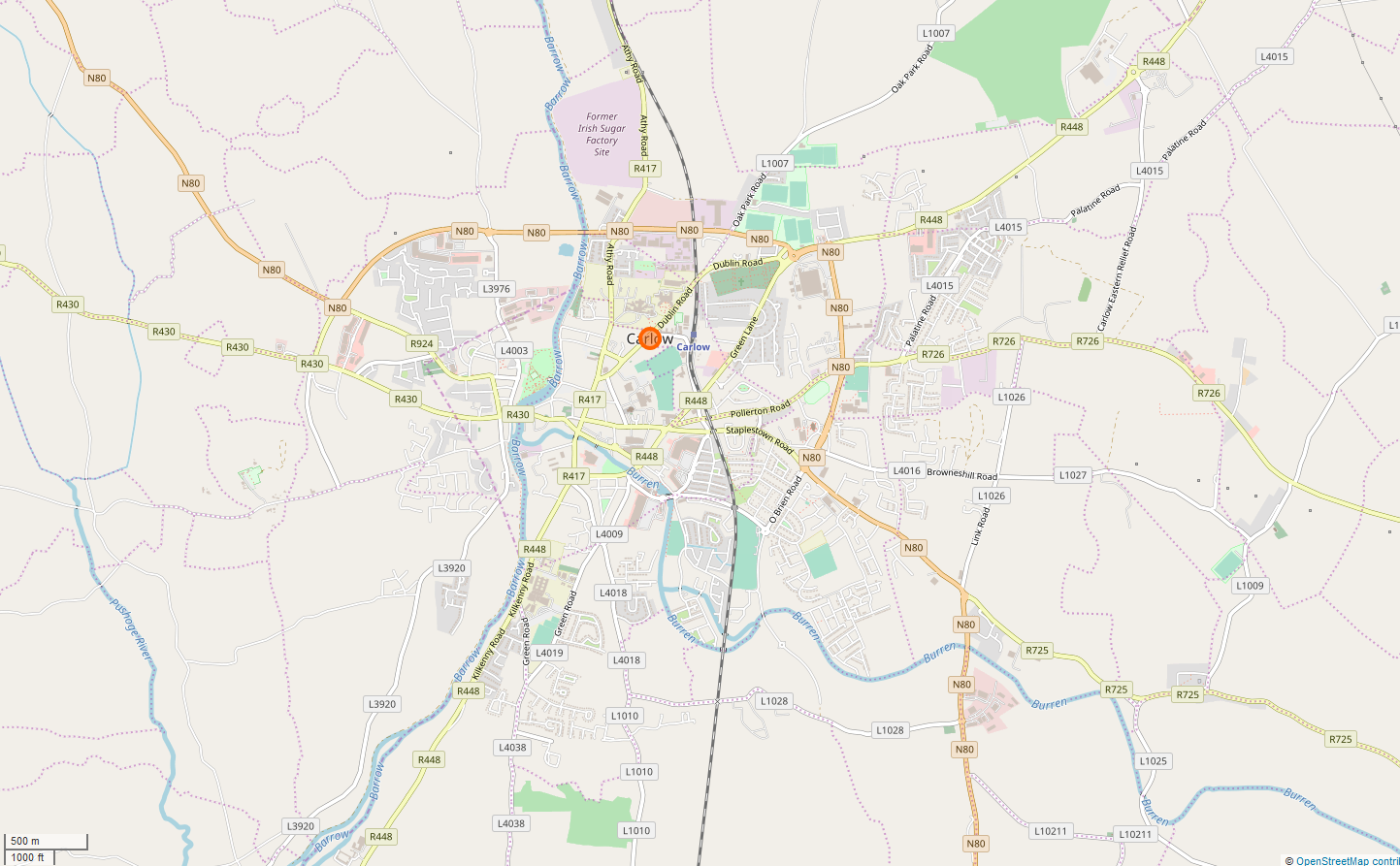|
Newtown, County Laois
Newtown or Newtown Cross () is a village in County Laois, Ireland. It is within the townlands of Clonbrock (''Cluain Broc'') and Doonane (''Dúnán''). Newtown lies close to the border between Counties Laois and Kilkenny at the point where the R430 regional road from Abbeyleix to Carlow crosses the N78 from Kilkenny to Athy. As of the 2016 census, the village had a population of 269 people. The local Gaelic Athletic Association club, Crettyard Crettyard () is a hamlet in County Laois, Ireland. It is situated on the border with County Kilkenny, near Newtown, at the junction of the N78 national primary route and the R431 regional road. Education Schools serving the area include New ..., has its grounds and clubhouse at Newtown Cross. See also * List of towns and villages in Ireland References {{County Laois Towns and villages in County Laois Townlands of County Laois ... [...More Info...] [...Related Items...] OR: [Wikipedia] [Google] [Baidu] |
Republic Of Ireland
Ireland ( ga, Éire ), also known as the Republic of Ireland (), is a country in north-western Europe consisting of 26 of the 32 counties of the island of Ireland. The capital and largest city is Dublin, on the eastern side of the island. Around 2.1 million of the country's population of 5.13 million people resides in the Greater Dublin Area. The sovereign state shares its only land border with Northern Ireland, which is part of the United Kingdom. It is otherwise surrounded by the Atlantic Ocean, with the Celtic Sea to the south, St George's Channel to the south-east, and the Irish Sea to the east. It is a unitary, parliamentary republic. The legislature, the , consists of a lower house, ; an upper house, ; and an elected President () who serves as the largely ceremonial head of state, but with some important powers and duties. The head of government is the (Prime Minister, literally 'Chief', a title not used in English), who is elected by the Dáil and appointed by ... [...More Info...] [...Related Items...] OR: [Wikipedia] [Google] [Baidu] |
Abbeyleix
Abbeyleix (; ) is a town in County Laois, Ireland, located around south of the county town of Portlaoise. Abbeyleix was formerly located on the N8, the main road from Dublin to Cork. At one point, up to 15,000 vehicles passed along the town's main street every day. Since May 2010, however, the town has been bypassed by the M8 motorway, with the former N8 consequently downgraded to the N77 national secondary road. History There was a settlement at Abbeyleix as early as 1183, that grew up near the River Nore, around a Cistercian monastery - which gives the town its name. Modern Abbeyleix is one of the oldest planned estate towns in Ireland. It was largely built in the 18th century by Viscount de Vesci. The regular flooding of the River Nore made the town an unhealthy place to live. Around 1790, John Vesey determined that the location of the town was not suitable for his tenants, and began to design a new one. The old town was levelled, and the residents moved to the new o ... [...More Info...] [...Related Items...] OR: [Wikipedia] [Google] [Baidu] |
List Of Towns And Villages In The Republic Of Ireland
This is a link page for cities, towns and villages in the Republic of Ireland, including townships or urban centres in Dublin, Cork, Limerick, Galway, Waterford and other major urban areas. Cities are shown in bold; see City status in Ireland for an independent list. __NOTOC__ A B C D E F G H I J K L M N O P Q R S T U V W Y See also *List of places in Ireland ** List of places in the Republic of Ireland **: List of cities, boroughs and towns in the Republic of Ireland, with municipal councils and legally defined boundaries. **: List of census towns in the Republic of Ireland as defined by the Central Statistics Office, sorted by county. Includes non-municipal towns and suburbs outside municipal boundaries. ** List of towns in the Republic of Ireland by population **: List of towns in the Republic of Ireland/2002 Census Records **: List of towns in the Republic of Ireland/2006 Censu ... [...More Info...] [...Related Items...] OR: [Wikipedia] [Google] [Baidu] |
Crettyard GAA
Crettyard GAA is a Gaelic Athletic Association gaelic football club in Crettyard near Newtown in County Laois, Ireland. The club is located near the Laois-Kilkenny border. History Shortly after the GAA was founded in 1884, there were two clubs in the area: Mayo "Die Hards" and Newtown "sons of Erin". According to ''The Nationalist and Leinster Times'', Newtown played a football game against Modubeagh in 1888, Mayo also played a match against Modubeagh in the Arles club tournament in 1889. An R.I.C. special branch report on the G.A.A. in Queens County in 1890, stated that the Mayo and Newtown clubs were both affiliated. The Mayo club officers were, Captain; John Doogue, Sec; James Murphy, Treas; John Graham. There were 40 members in the club. The Newtown club officers were Captain: Luke Delaney; Sec: John Dooley; Treasurer: William Delaney, Newtown had 55 members. The draw for the football championship of 1891 had Newtown v Drimroe down to play in Kellyville on 19 April 1891 w ... [...More Info...] [...Related Items...] OR: [Wikipedia] [Google] [Baidu] |
Gaelic Athletic Association
The Gaelic Athletic Association (GAA; ga, Cumann Lúthchleas Gael ; CLG) is an Irish international amateur sporting and cultural organisation, focused primarily on promoting indigenous Gaelic games and pastimes, which include the traditional Irish sports of hurling, camogie, Gaelic football, Gaelic handball and rounders. The association also promotes Irish music and dance, as well as the Irish language. As of 2014, the organisation had over 500,000 members worldwide, and declared total revenues of €65.6 million in 2017. The Games Administration Committee (GAC) of the Gaelic Athletic Association (GAA) governing bodies organise the fixture list of Gaelic games within a GAA county or provincial councils. Gaelic football and hurling are the most popular activities promoted by the organisation, and the most popular sports in the Republic of Ireland in terms of attendances. Gaelic football is also the second most popular participation sport in Northern Ireland. The women' ... [...More Info...] [...Related Items...] OR: [Wikipedia] [Google] [Baidu] |
Athy
Athy ( ; ) is a market town at the meeting of the River Barrow and the Grand Canal in south-west County Kildare, Ireland, 72 kilometres southwest of Dublin. A population of 9,677 (as of the 2016 census) makes it the sixth largest town in Kildare and the 50th largest in the Republic of Ireland, with a growth rate of approximately 60 per cent since the 2002 census. Name Athy or ''Baile Átha Í'' is named after a 2nd-century Celtic chieftain, Ae, who is said to have been killed on the river crossing, thus giving the town its name "the town of Ae's ford". The ''Letters of the Ordnance Survey'' (1837) note that "The town is now called by the few old people who speak Irish there and in the Queen's County Laois">/nowiki>Laois.html" ;"title="Laois.html" ;"title="/nowiki>Laois">/nowiki>Laois">Laois.html" ;"title="/nowiki>Laois">/nowiki>Laois/nowiki>, ''"baile átha Aoi"'', pronounced Blahéé", where ''éé'' stands for English 'ee' [i:] as clarified by a note written in pencil ... [...More Info...] [...Related Items...] OR: [Wikipedia] [Google] [Baidu] |
Kilkenny
Kilkenny (). is a city in County Kilkenny, Ireland. It is located in the South-East Region and in the province of Leinster. It is built on both banks of the River Nore. The 2016 census gave the total population of Kilkenny as 26,512. Kilkenny is a tourist destination, and its environs include historic buildings such as Kilkenny Castle, St Canice's Cathedral and round tower, Rothe House, Shee Alms House, Black Abbey, St. Mary's Cathedral, Kilkenny Town Hall, St. Francis Abbey, Grace's Castle, and St. John's Priory. Kilkenny is also known for its craft and design workshops, the Watergate Theatre, public gardens and museums. Annual events include Kilkenny Arts Festival, the Cat Laughs comedy festival and music at the Kilkenny Roots Festival. Kilkenny began with an early 6th-century ecclesiastical foundation within the Kingdom of Ossory. Following the Norman invasion of Ireland, Kilkenny Castle and a series of walls were built to protect the burghers of what became a Norman ... [...More Info...] [...Related Items...] OR: [Wikipedia] [Google] [Baidu] |
N78 Road
N78 may refer to: Roads * N78 road (Ireland) * Ozamiz–Pagadian Road, in the Philippines * Nebraska Highway 78, in the United States Other uses * N78 (Long Island bus) The following bus routes are operated in Nassau County, New York. Most of these routes are operated under Nassau Inter-County Express (NICE), formerly MTA Long Island Bus, except in Greater Long Beach, where that city operates its own bus servic ... * , a submarine of the Royal Navy * Mangarrayi language * Nokia N78, a smartphone {{Letter-NumberCombDisambig ... [...More Info...] [...Related Items...] OR: [Wikipedia] [Google] [Baidu] |
Carlow
Carlow ( ; ) is the county town of County Carlow, in the south-east of Ireland, from Dublin. At the 2016 census, it had a combined urban and rural population of 24,272. The River Barrow flows through the town and forms the historic boundary between counties Laois and Carlow. However, the Local Government (Ireland) Act 1898 included the town entirely in County Carlow. The settlement of Carlow is thousands of years old and pre-dates written Irish history. The town has played a major role in Irish history, serving as the capital of the country in the 14th century. Etymology The name is an anglicisation of the Irish ''Ceatharlach''. Historically, it was anglicised as ''Caherlagh'', ''Caterlagh'' and ''Catherlagh'', which are closer to the Irish spelling. According to logainm.ie, the first part of the name derives from the Old Irish word ''cethrae'' ("animals, cattle, herds, flocks"), which is related to ''ceathar'' ("four") and therefore signified "four-legged". The second p ... [...More Info...] [...Related Items...] OR: [Wikipedia] [Google] [Baidu] |
Regional Road (Ireland)
A regional road ( ga, bóthar réigiúnach) in the Republic of Ireland is a class of road not forming a major route (such as a national primary road or national secondary road), but nevertheless forming a link in the Roads in Ireland, national route network. There are over 11,600 kilometres (7,200 miles) of regional roads. Regional roads are numbered with three-digit route numbers, prefixed by "R" (e.g. R105). The equivalent road category in Northern Ireland are Roads in Northern Ireland#"B" roads, B roads. History Until 1977, classified roads in the Republic of Ireland were designated with one of two prefixes: Trunk Roads in Ireland, "T" for Trunk Roads and "L" for Link Roads. ThLocal Government (Roads and Motorways) Act authorised the designation of roads as National roads: in 1977, twenty-five National Primary roads (N1-N25) and thirty-three National Secondary roads (N51-N83) were initially designated unde Many of the remaining classified roads became Regional roads (formally ... [...More Info...] [...Related Items...] OR: [Wikipedia] [Google] [Baidu] |
Provinces Of Ireland
There have been four Provinces of Ireland: Connacht (Connaught), Leinster, Munster, and Ulster. The Irish language, Irish word for this territorial division, , meaning "fifth part", suggests that there were once five, and at times Kingdom_of_Meath, Meath has been considered to be the fifth province; in the medieval period, however, there were often more than five. The number of provinces and their delimitation fluctuated until 1610, when they were permanently set by the English administration of James VI and I, James I. The provinces of Ireland no longer serve administrative or political purposes but function as historical and cultural entities. Etymology In modern Irish language, Irish the word for province is (pl. ). The modern Irish term derives from the Old Irish (pl. ) which literally meant "a fifth". This term appears in 8th-century law texts such as and in the legendary tales of the Ulster Cycle where it refers to the five kingdoms of the "Pentarchy". MacNeill enumer ... [...More Info...] [...Related Items...] OR: [Wikipedia] [Google] [Baidu] |


.jpg)



